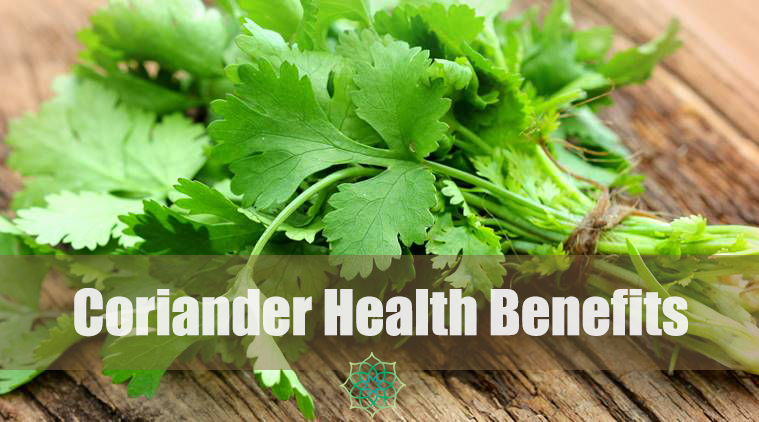Coriander is a phenomenal herb that is packed with vitamins A, K, & C, minerals such as iron, calcium, and magnesium, and has more antioxidants than most fruits or vegetables. Coriander is a remarkable heavy-metal detoxifier and is able to remove mercury and aluminium from where it is stored in the adipose (fat) tissues.
Cilantro is also able to mobilise mercury rapidly from the brain and central nervous system by separating it from the fat tissue and moving into the blood & lymph where when combined with a blue green algae such as spirulina it can be removed safely and effectively from the body. Coriander & blue green algae used together is a winning combination and a natural miracle that has given tremendous relief to those suffering from mercury poisoning & toxicity.
Coriander also contains an anti-bacterial compound called dodecenal which has the ability to kill salmonella bacteria and prevent salmonella poisoning. Coriander is highly beneficial for Alzheimer’s disease, Parkinson’s disease, Arthritis, Diabetes, Viral and Bacterial Infections, Hepatitis, Colitis, Obsessive-Compulsive Disorders, Autism, Tourette Syndrome, Infertility, and Bell’s Palsy. Coriander is also very helpful with autoimmune disorders such as Fibromyalgia, Addison’s Disease, Guillain-Barre syndrome, IBS, Multiple Sclerosis, and Chronic Fatigue Syndrome.
Coriander is known to support the stomach, spleen, adrenals, thyroid, pancreas, bladder, and lungs. It is also highly beneficial in reducing LDL (bad) cholesterol and raising HDL (good) cholesterol. Coriander is often juiced with celery and apples for a medicinal and healing drink. Juicing coriander is one of the most effective ways to get at least one bunch or more of coriander in you a day.
Coriander can also be added to smoothies, salsas, salads, guacamole, soups, pesto, tomatoes, beans, and veggie dishes. If the green flavour of coriander does not appeal to you, yet you still want to receive its health benefits, consider using coriander powder or extract which can be found online or at your local health food store.
Cilantro vs Coriander: What’s the Difference?

Cilantro and coriander come from the plant species — Coriandrum sativum (1).
However, they are named differently in different parts of the world.
In North America, cilantro refers to the leaves and stalks of the plant. The word “cilantro” is the Spanish name for coriander leaves. Meanwhile, the dried seeds of the plant are called coriander.
Internationally, it’s a different story. Coriander is the name for the leaves and stalks of the plant, while the dried seeds are called coriander seeds.
To avoid confusion, the rest of this article refers to the leaves and stalks of the Coriandrum sativum plant as cilantro and the dried seeds as coriander.
Despite coming from the same plant, cilantro and coriander have significantly different nutrient profiles, tastes and uses.
This article will help you understand the differences between cilantro and coriander.
They Have Different Nutrient Profiles

Cilantro leaves have much higher levels of vitamins, but lower levels of minerals. Conversely, coriander seeds have lower levels of vitamins, but far more minerals (2, 3).
They Taste and Smell Different

Interestingly, cilantro and coriander have different tastes and aromas.
Cilantro is an herb with a fragrant, citrusy flavor. Many people enjoy its refreshing taste and aroma, but others can’t stand it. Interestingly, people that find cilantro repulsive tend to have a genetic trait that makes them perceive cilantro as “foul” or “soapy” (5).
One study looked at the proportion of people from different ethnicities that dislike cilantro.
They found 21% of East Asians, 17% of Caucasians, 14% of people of African descent, 7% of South Asians, 4% of Hispanics and 3% of Middle Eastern participants disliked cilantro (5).
On the other hand, coriander appears to have a less polarising taste and smell. Its aroma is best described as warm, spicy and nutty, with a hint of citrus. The spice is commonly paired with cumin and cinnamon because they share similar flavour traits.
They Have Different Uses in Cooking

The different properties of cilantro and coriander have led people to use them differently in recipes.
The refreshing, citrusy taste of cilantro leaves has made them a common garnish in South American, Mexican, South Asian, Chinese and Thai dishes.
Fresh cilantro is typically added just before serving, since heat can quickly reduce its flavor.
Cilantro Dishes
Here are some dishes that contain cilantro:
- Salsa: A Mexican side dish
- Guacamole: An avocado-based dip
- Chutney: A sauce of Indian origin
- Acorda: A Portuguese bread soup
- Soups: Some may call for cilantro as a garnish to enhance their flavor
Conversely, coriander seeds have a warmer and spicier taste and are commonly used in dishes that have a spicy kick.
Coriander Dishes
Here are some dishes that contain coriander:
- Curries
- Rice dishes
- Soups and stews
- Meat rubs
- Pickled vegetables
- Borodinsky bread: A sourdough rye bread of Russian origin
- Dhana dal: Roasted and crushed coriander seeds, a popular Indian snack
Dry roasting or heating coriander seeds can enhance their taste and aroma. However, ground or powdered seeds lose their flavor quickly, so they’re best enjoyed fresh.
Coriander Essential Oil – Plant Part: Seed
I always have a bottle of my coriander essential oil for those times that I might not have seeds or fresh coriander available or when travelling it’s a great alternative to have stored in your cupboard for those times.

This blog, its content and any linked material are presented for informational purposes only and are not a substitute for medical advice, diagnosis, treatment, or prescribing.
Nothing contained in or accessible from this blog should be considered to be medical advice, diagnosis, treatment, or prescribing, or a promise of benefits, claim of cure, legal warranty, or guarantee of results to be achieved.
Never disregard medical advice or delay in seeking it because of something you have read in this blog or in any linked material.

